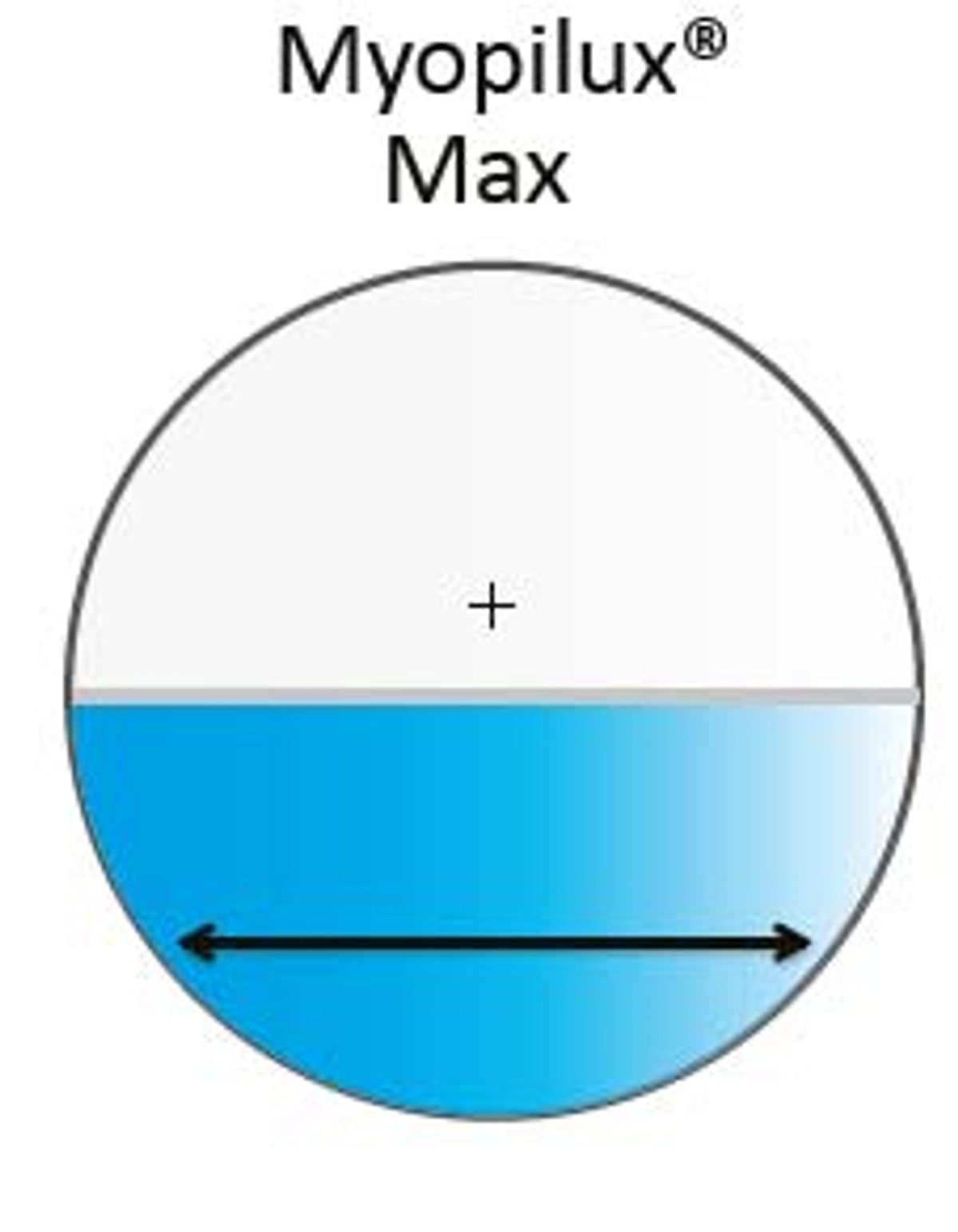
Myopilux Max
Myopilux Max bifocal spectacle lenses have good utility as a treatment option which provides both refractive correction of myopia and myopia control efficacy. They are designed to cause minimal disturbance to the binocular vision system by incorporating prism within the addition zone. One randomized controlled trial of three years' duration showed a moderate myopia control effect for this lens design. Where available, new myopia controlling spectacle lenses such as the Essilor® Stellest® will likely offer better myopia control efficacy than Myopilux Max design.
Visit the Myopilux Max website.
